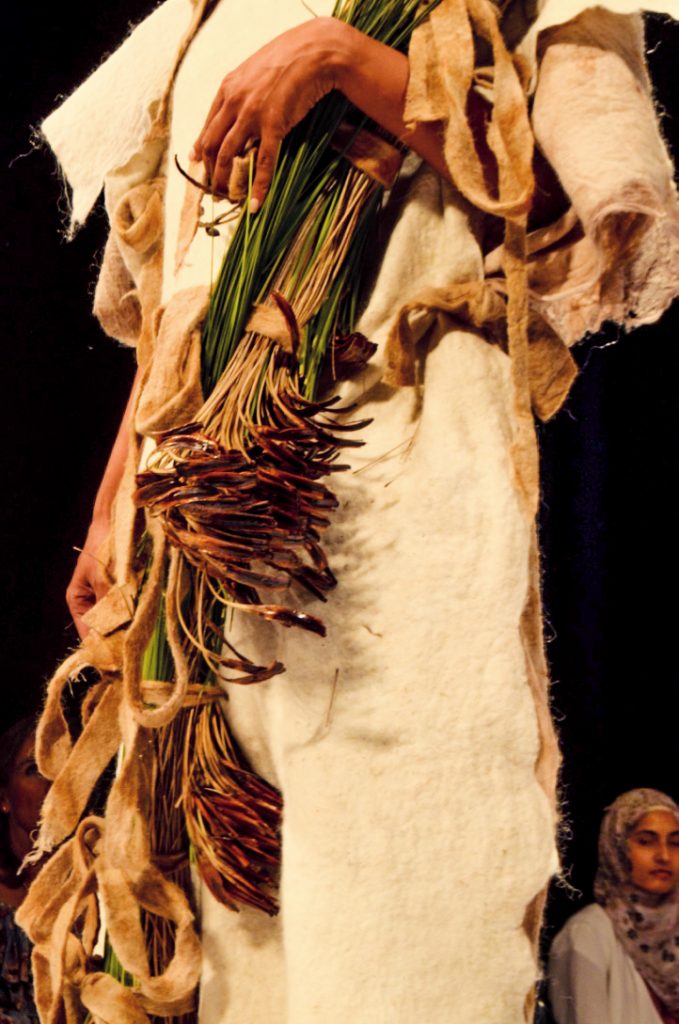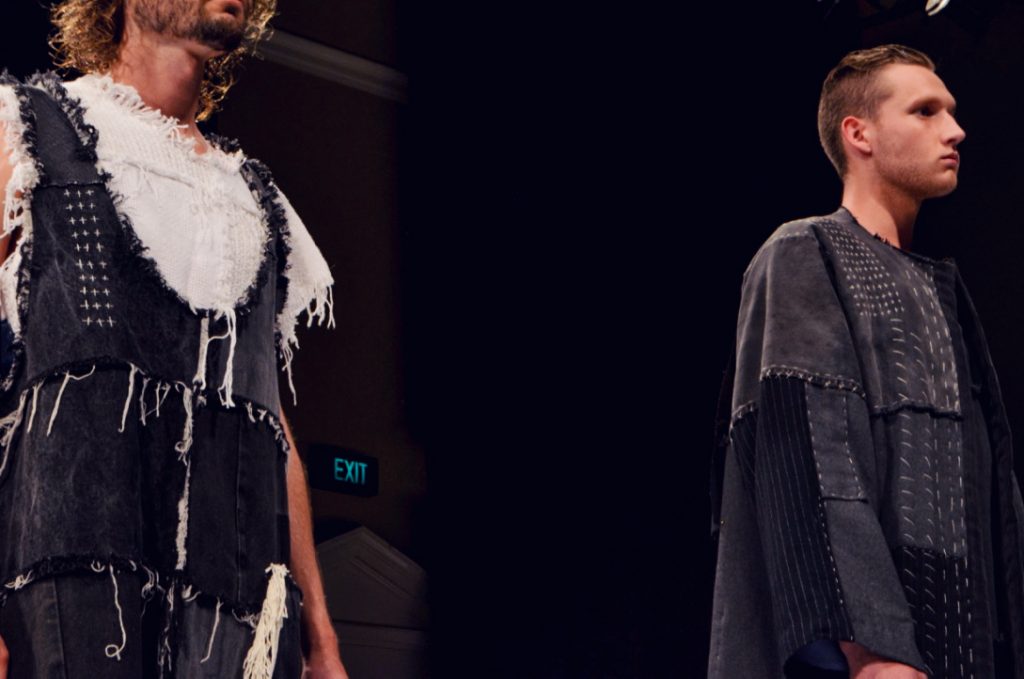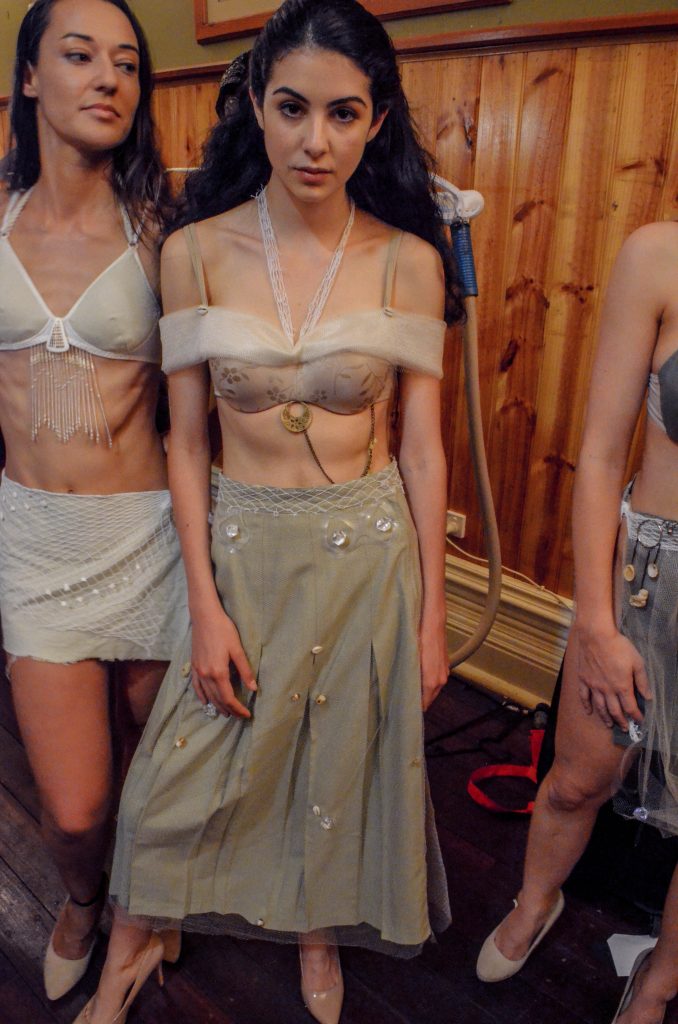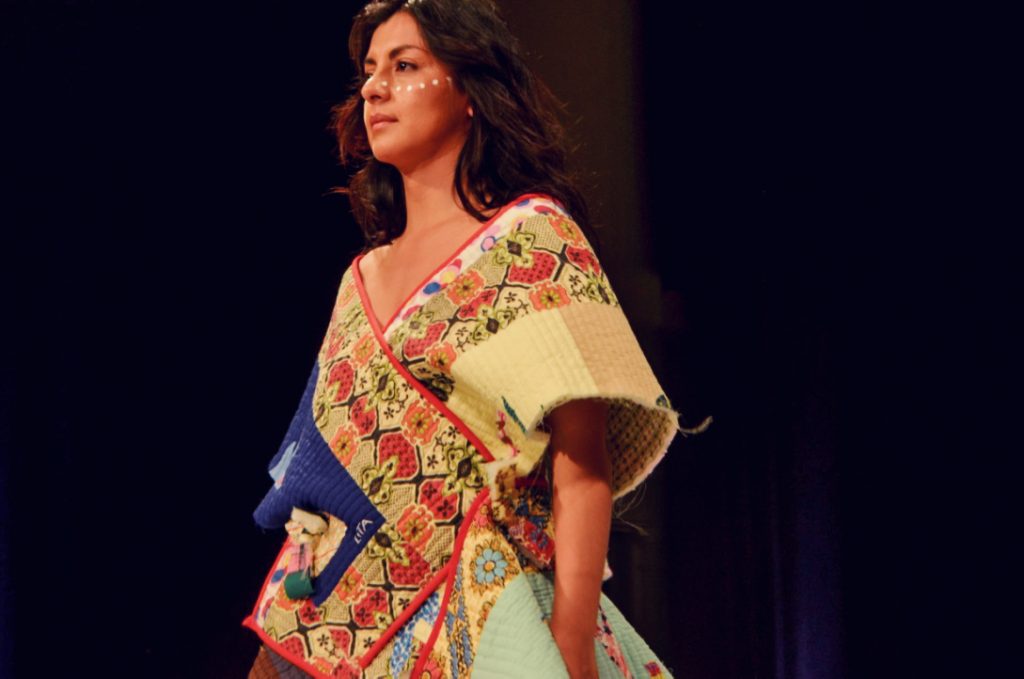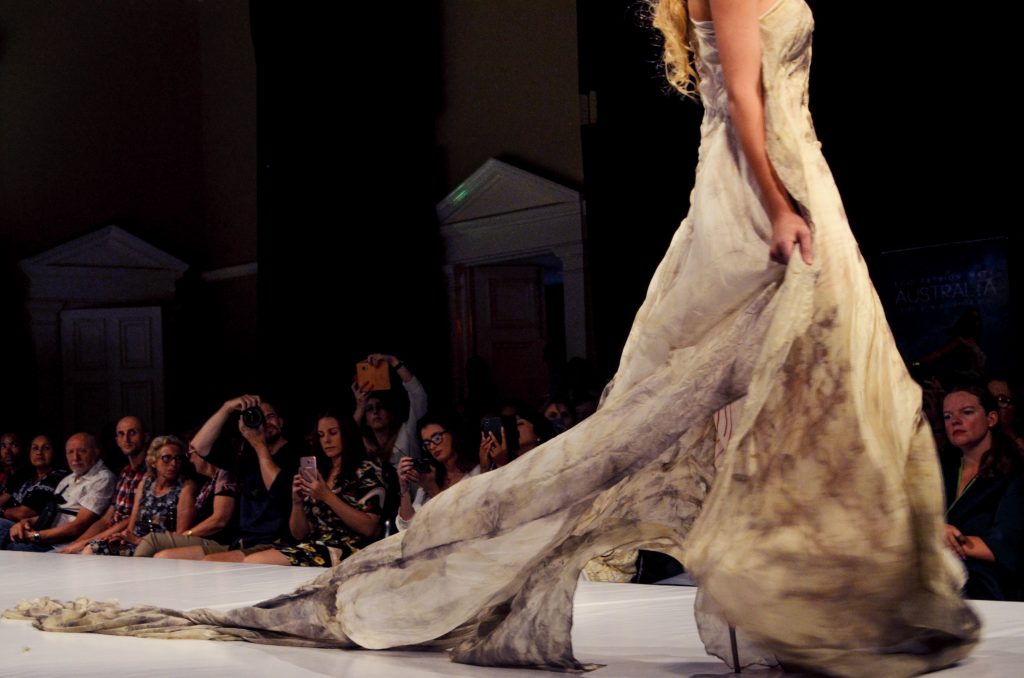Eco Fashion Week Wrap-Up
Eco Fashion Week Australia is the brainchild of sustainable fashion designer Zuhal Kuvan-Mills. The event focuses on designers with an artistic perspective and take on sustainability; much like herself through her ‘green couture’ line. With designers from around the globe as well as local West Australians, this event explores sustainability visually, intellectually through talks and discussions, as well as practically in their workshops. Commonalities and themes arose throughout the week in the topics that designers felt passionate about, and the way in which they represented those aesthetically. The strength of the event is its effort to get universities, local businesses, media and designers involved. Bringing together an international community of green warriors, the Eco Fashion Week is an effort to make Fremantle into a slow fashion capital. Here are our highlights and the major themes from the designers at Australian fashion week.
Natural Dyeing
Leaves, flowers, spices; we saw a wide array of colours derived from natural sources through designers from different backgrounds who use their native plants to their advantage. Merdi Sihombing Indonesia used the intricate work of weavers from lake Toba, dyed with waste from markets and households thus bringing Indonesian heritage to contemporary silhouettes. Green Embassy revolved around natural dyes as did the Fabric of Nature show, both utilising sheer, flowy fabrics to showcase the imprints of leaves and flowers on the garments. Fabric of Nature explored native vegetation of Western Australia specifically.
Upcycling
In the student showcases we saw an enthusiasm for making new garments out of old men’s shirts as well as designer’s for Marilyn Wilson’s upcycling challenge in innovative ways. Sylvia Calvo utilised old coffee bags, whereas Salvij by Gigi’s show had curtains and vintage lace. Clawdi was an exploration of Japanese boro which is a way of mending with visible stitching using old textiles. On muted, mostly dark fabrics Claudi stitched words and statements that challenge the status quo such as ‘girls will be boys’ and ‘boys will be girls’. Stain’s repurposed textile garments were conceptual and utilised draping, stitching, embroidery and blots of colour reminiscent of colour stains.
Biodegradable fabrics
Wool, silk, cotton and linen were used frequently; designers were passionate about not leaving waste behind. This was demonstrated through outbursts of plastic on the catwalk, speeches about not harming the planet and going zero waste as well as the use of natural, biodegradable fabrics. Designers utilised the full spectrum of these fabrics and made pieces of art out of them, hence making them items you would never want to throw away anyway.
the ocean is a thing close to the hearts of Aussie designers, and a driver of their love of sustainability
Aboriginals
Connection to nature and the Australian aboriginal way of life was seen in many aspects of the shows. Through inspirations from Aboriginal art, traditional performances such as ‘Welcome to Country’ and explorations of their philosophies. Lima Jordan brightened up the stage with bright yellows, earthy tones and a clear aesthetic direction that loaned from Aboriginal art and culture. Studio Membrane was especially engulfed in Aboriginal culture and came to Australia to learn more about it so that he could represent it in his collection of voluminous, structural garments that incorporated flowers, natural dyeing and bright upcycled prints reminiscent of Aboriginal art
Ocean conservation
Statements on clothing about ocean conservation, garments made out of fishing nets and plastic bottles to reduce ocean waste showcased a need to protect the oceans from harm. It was also obvious that the ocean is a thing close to the hearts of Aussie designers, and that it was a driver of their love of sustainability. Green Embassy’s show that kicked off the event, started with children walking down the catwalk, surrounded by fishing net; a moment which sent chills down everyone’s spine.
Imitating nature
Many designers were seen mirroring the forms of the hills and shapes of local flora in West Australia. An understanding of local surroundings and inspiration from them was prevalent during the week, and many designers utilised their local environment through earthy tones as well as foraged leaves and other elements from nature. Curtin Springs paper showed bags made of native Australian grass.


